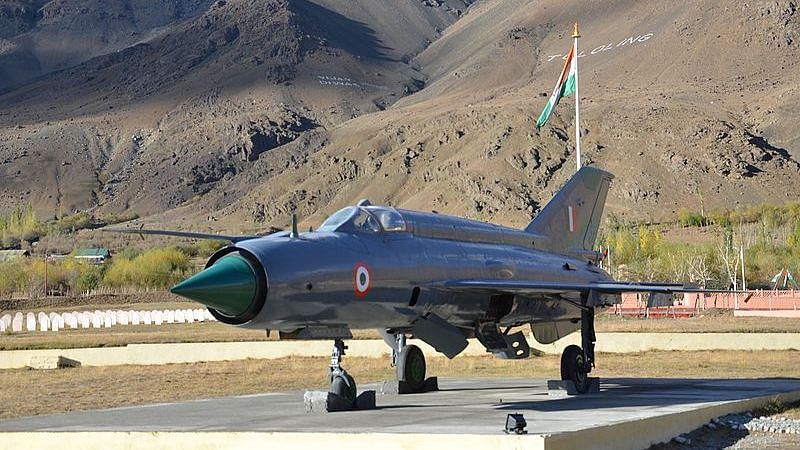New Delhi: In his first remarks following the India-Pakistan dogfight last week, Air Chief Marshal B.S. Dhanoa said Monday that a MiG-21 Bison shot down an advanced American-origin F-16 of the Pakistan Air Force after it made incursions into Indian airspace.
In an attempt to quell criticism over the use of MiG-21 Bison in the attack — a MiG-21-Bison was shot down as well resulting in the capture of Wing Commander Abhinandan Varthaman — the Indian Air Force (IAF) chief justified the move saying the Bison is an upgraded aircraft with better radar and missiles than the previous ones.
Dhanoa’s comments came after Prime Minister Narendra Modi said Saturday that India could have achieved more if the country had Rafale jets.
With controversy snowballing over the presence of the MiG-21 Bison in the IAF inventory, ThePrint takes a look at the history of the aircraft and what the latest upgrades mean.
History of MiG-21 Bison
The Russian-origin MiG-21 Bison is one of India’s six fighter jets. It is a single engine, single-seater multi-role fighter/ground attack aircraft which forms the “back-bone of the IAF”, according to the air force’s website.
It has a maximum speed of 2230 km/hr (Mach 2.1) and carries one 23mm twin barrel cannon with four R-60 close combat missiles.
First inducted into the IAF in 1963, the supersonic MiG-21 was initially developed as an interceptor, but was later upgraded to perform other functions of a combat aircraft, including ground attacks, owing to various reasons but primarily a crunch of funds.
Since the 1950s, the MiG-21s have come out with nearly a dozen variants, of which the IAF squadrons have comprised several — including Type-77, Type-96 and the BIS.
The Bison is the latest upgrade. Since 2006, over a 100 MiG-21s of the IAF have been upgraded to Bison.
The IAF will phase out the MiG-21 Bison by 2022, when the aircraft reach the end of their lifetime, said an IndiaSpend report.
Also read: Why IAF picked MiG-21s to take on Pakistani F-16s on Wednesday
What are the upgrades?
A senior IAF official said the upgrades to the MiG-21 BIS that became the latest MiG-21 Bison include upgraded electronics, better avionics and communication systems, the Kopyo light weight multi-mode radar, a helmet-mounted display and a better windshield, among others.
“It was made capable of carrying modern weapon systems and missiles. In terms of electronics, it could have been compared to the then Mirage 2000,” said the IAF official on condition of anonymity.
“The information available to pilots and their self-protection was better in the upgraded aircraft,” the official added.
Another senior IAF official said multi-function display cockpits, radio sets, electronic warfare suite, inertial navigation system/GPS were also among the upgrades.
Also read: Flying MiG-21 is a tradition for the Varthamans. Dad flew it, son Abhinandan flies it
Limitations of upgrades
The first official said the engine performance, however, could not be improved as part of the upgrade.
“It is not possible to upgrade the load-carrying capacity of the jet. The limitation is the air frame,” the official explained.
Over the last few decades, the MiG-21 fighter jets have earned a bad reputation for accidents and pilot casualties, earning the name “flying coffin”.
Between 1963 and 2015, the MiG-21 saw a total of 210 accidents, said a News18 report.
However, not using the MiG-21 aircraft for operations would deplete the squadron strength of the IAF significantly. Against IAF’s authorised strength of 42 squadrons, it had only 33 fighter aircraft squadrons as of September 2018.
